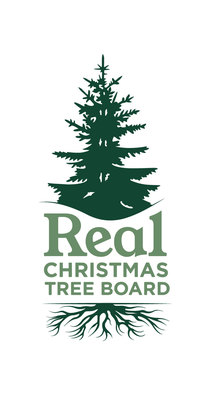Strong demand and steady sales
And … as go input costs, so go wholesale prices
HOWELL, Mich., Sept. 26, 2022 /PRNewswire-HISPANIC PR WIRE/ — The questions have become a tradition for real Christmas tree growers: How are sales? How are supplies? What about this crazy weather? Are prices going up? Will you run out of trees? The answers rarely change:

Looking good … Varies by region, but strong overall … Crazy for sure, but isolated and the industry is stronger than any one event … Like nearly all consumer goods this year, probably a bit … and Nope. Big nope. We didn’t last year, or the year before that, or the year before that, or, well, you get the point.
The answers don’t change much because the real Christmas tree industry is decentralized, with major wholesale growers spanning various regions of the country and because the seven to 12-year growth span required to bring a tree to market means supply can be adjusted by leaving trees in the ground a little longer or harvesting them a littler earlier — whatever a particular season dictates.
But rather than leave the outlook to tradition, guess work, or those without a front-row seat, the Real Christmas Tree Board surveyed 55 wholesale growers of real Christmas trees across the U.S. last month. Combined, the respondents supply an estimated two-thirds of the country’s real Christmas tree market.
When paired with the Board’s annual consumer survey, it provides the most accurate forecast of the season possible. (Full results of the consumer survey will be released next month.)
Bottom line: 2022 will look a lot like 2021
“The real Christmas tree industry met demand last year and it will meet demand this year,” said Marsha Gray, Executive Director of the Real Christmas Tree Board. “This is essentially a year without surprises.”
“Our annual consumer survey showed that 86% of real Christmas tree buyers said they had no problems finding a place nearby to buy their tree last year,” said Gray. “And 87% told us they found the tree they wanted at the first place they looked.” 1
“We expect this year to be no different,” she said. “The grower survey tells us demand is healthy. Retailers see steady consumer interest in real Christmas trees and right now supply is pretty well matched to that interest. The majority – 67% of the wholesalers we talked to – said they expect to sell all the trees they plan to harvest this year. In terms of volume, more than half – 55% – said they expect to sell about the same amount of real Christmas trees as they did last year. The balance was divided: Some expect to sell more, some less.” 2
Here are some of the other wholesale grower survey findings:
Input costs are up for everyone.
All respondents estimate their input costs have increased compared to last year. The most frequently cited range of increase was 11% to 15% (36% of respondents), but more than a quarter (27%) put it even higher, at 16% to 20% compared to last year’s input costs. Another quarter (25%) said such costs have gone up as much as 10% year-over-year. And 10% of respondents put it higher still, with their year-over-year estimated increase coming in at more than 21%. 2
Growers anticipate increasing their wholesale prices.
The majority of growers (71%) cited a likely wholesale price increase of 5% to 15% compared to last year while 11% of respondents anticipated increasing their wholesale prices by a more modest amount: up to no more than 5% over last year. Another 11% put their anticipated price increase at 16% to 20% more than last year. Only a few — 5% — expect their increase to hit 21% or more. Fewer than 2% of respondents said they don’t anticipate increasing their wholesale prices this year. 2
Growers’ biggest concerns are about supply chain slowdowns and the impact of inflation on consumer spending.
The survey presented a list of possible concerns and asked wholesale growers to rank them from greatest concern to least. Consistent with supply chain woes around the country — and around the world — since the onset of the pandemic, the number one concern was freight/shipping/logistics/supply chain slowdowns, as ranked by 44% of the respondents. The second-place concern was, not surprisingly, impact of inflation on consumer spending (as ranked by 35% of respondents). Third was labor availability and cost (21%). Too little supply ranked fourth (25%), weather conditions ranked fifth (33%), and least concerning of all was too much supply, with more than half (53%) ranking it sixth. 2
No plot twists
“There are no plot twists in the real Christmas tree story this year,” said Gray. “Just the steady hand of professional growers bringing joy to consumers and business savvy to the marketplace.”
Gray has advice for people who cry wolf about the supply of real Christmas trees each season: “Remember that no one story is the whole story. It has always been the case that this retailer may sell out earlier than that retailer, but neither one provides a complete picture. The real Christmas tree industry is bigger than any one farm, retailer, or region — and we’ve never run out of trees.”
Inflation has been the dominant story of the year when it comes to consumer products, so Gray returns to the consumer survey for additional perspective.
“While our grower survey tells us wholesale prices are likely to be higher for real Christmas trees this year, our consumer survey tells us people expected as much,” said Gray. “The good news is fans of real Christmas trees say they believe the trees are worth the price and they are willing to pay more this year if necessary to get one – and that’s not a surprise either.” 1
SURVEY METHODOLOGY
1 About The Consumer Survey: TRUE Global Intelligence (TGI), the in-house research practice of FleishmanHillard, fielded a survey of 1,500 Americans adults ages 21 to 49 years. All survey respondents celebrate or observe Christmas and either decide or share in the decision of whether and what kind of Christmas tree to put up in their home each year or influence their home’s decisionmaker. The survey was fielded from May 26 to June 13, 2022. The survey has a margin of error of ±2.5% and higher for subgroups.
2 About The Grower Survey: The Real Christmas Tree Board, in conjunction with FleishmanHillard, fielded a survey of 55 wholesale growers of real Christmas trees across the U.S. Each of the responding growers conducts business in one or more of the following regions: Northwest, West, Southwest, Mid-West, Northeast, Mid-Atlantic, and Southeast. Combined, the respondents supply more than two-thirds of the country’s real Christmas trees market. The survey was fielded in August 2022.
KNOW YOUR SOURCES
The Real Christmas Tree Board (RCTB) is the media’s expert resource for insights about farm-grown Christmas trees. Chartered in 2015 as the Christmas Tree Promotion Board and renamed in 2022, it is a national research and promotion program whose mission is to share the benefits of fresh Christmas trees with consumers through promotion and public relations, while engaging in research to better serve our customers and growers. The USDA provides oversight of the RCTB to ensure transparency, accuracy, and fairness in its communications. The RCTB provides the media and public with accurate information, added insights, and the latest news and inspiration for the season. It represents real Christmas trees sold in the United States and is supported through annual assessments paid by any business growing or importing 500 or more real Christmas trees. This press release was developed and distributed by the RCTB. Search “Real Christmas Tree Board” online and visit RealChristmasTreeBoard.com
National Christmas Tree Association (NCTA) founded in 1955, is the national trade association and advocacy organization for the farm-grown Christmas tree industry leading its public policy/governmental affairs and serving as the “voice of the industry.” NCTA represents hundreds of active member farms, 38 state and regional associations, and thousands of affiliated businesses that grow and sell Christmas trees or provide related services. Each year, since 1966, an NCTA member has presented the official White House Christmas tree to the First Lady which is displayed in the Blue Room. NCTA is also a trusted media resource on farm-grown Christmas trees.
American Christmas Tree Association (ACTA) does not represent real Christmas trees or growers. It is a 501(c)(3) corporation established in 2009 and has no known members representing the real Christmas tree industry. Thomas Harman1 is CEO of ACTA and is also the founder and CEO of Balsam Hill, a seller of artificial Christmas trees.2 The majority of artificial Christmas trees are manufactured overseas.3
1 https://apps.irs.gov/pub/epostcard/cor/352342528_201912_990EO_2021042017972245.pdf
2 https://www.balsamhill.com/about-us
3 https://www.datamyne.com/blog/indicators/christmas-tree-imports-growers-come-short/
Media contact
[email protected]
Logo – https://mma.prnewswire.com/media/786317/RCTB_Logo.jpg
SOURCE Real Christmas Tree Board







